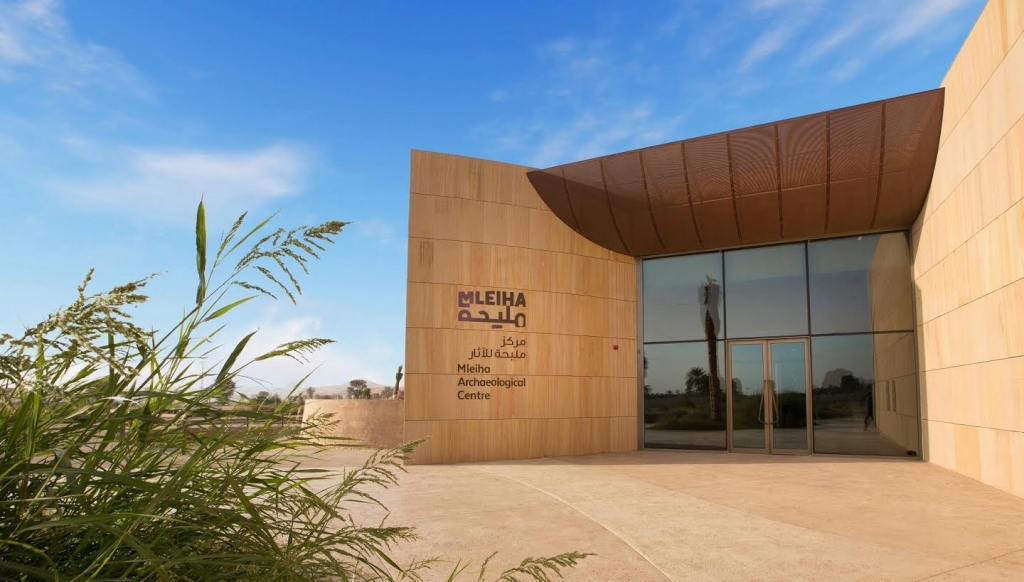
Mleiha’s Fort, Lake and Cave Tell the Story of Early Man
With its prime indications of early human civilisation that have established it as one of the world’s rich troves for archaeology, Mleiha proudly showcases its authentic cultural legacy. The Sharjah site’s abundance of artefacts that tell the story of man’s first inhabitation of the area 130,000 years ago enhance its vast panorama of natural wonders, making Mleiha a rare natural gem and a top tourist destination in the UAE and wider Gulf region.
Mleiha's archeological value stems from it being home to the earliest human settlers, with their shaping of the landscape and the antiquities they left behind standing as testament to the impact of mankind’s first communities. The traces these inhabitants bequeathed narrate the history of the region, with the archaeological treasures uncovered during excavations carried out by local and foreign experts providing concrete evidence that Mleiha was indeed a cradle for civilization.
Among the most important archeological finds in Mleiha is the remnant of an ancient lake, which was formed by precipitation many thousands of years ago. Experts believe that the feature was created by the torrential rains that overflowed from Al Hajr Mountains down to Mleiha's plains, with studies revealing that the lake supplied the local population with fresh drinking water and was a prime source for irrigation.
Visitors to Mleiha can gain a fascinating insight into the region's anthropological history through the tools used by its earliest inhabitants. Excavations have led to the discovery of the Faya Cave in the Faya Mountain - a dwelling area carved into the rock - where ancient tools dating back to the Stone Age have been unearthed. These discoveries reveal Mleiha's geostrategic location as a gateway from the African continent to the East & West, signifying man's ability and ingenuity in creating shelter that can resist the rigors of nature.
Featuring eight towers and built from bricks made from clay and straw, the Mleiha Archaeological Fort dates back to the Late Pre-Islamic period from the 2nd to the 3rd century Common Era (CE). The fort, which enjoyed significant political and economic status during its early years, provides further evidence of the activities of the more recent human settlers in the region. Excavations have indicated military actions, with burn marks and damage to the fort’s thick walls likely evidence of period of war or conflicts in the area. The structure, which comprises rooms that housed soldiers and other inhabitants, now showcases some of the artifacts and equipments of the era, including wood-burning stoves, coin molds, and other valuable and ancient findings.
Mleiha Archaeological and Ecotourism Project is one of the leading tourist destinations of Sharjah Investment and Development Authority (Shurooq), with its first phase inaugurated in January 2016. The project reflects the desire of His Highness Dr. Sheikh Sultan Bin Mohammed Al Qasimi, Supreme Council Member and Ruler of Sharjah, in highlighting Sharjah’s ancient archaeological sites.
Driven by its commitment to preserving the emirate's rich array of archaeological treasures, Shurooq is leading efforts to revitalise the Mleiha region in a manner that is consistent with its history and cultural value. The authority’s development plan is being implemented in accordance with a tridimensional strategy, which combines Mleiha's cultural components, human civilisation and archaeological heritage, in the process making it one of the most prominent attractions in Sharjah and a significant regional and international tourist destination.
By implementing a range of development projects that include the construction of premium facilities and amenities, Shurooq has contributed to strengthening Mleiha's archaeological and tourist stature considerably. The authority has also increased its capacity to allow the largest possible number of visitors to explore its antiquities and natural wonders within a fully-integrated environment.
Mahmoud Rashid Al Suwaidi, Manager of the Mleiha Archaeological and Eco-Tourism Project, said: "Capitalizing on the density of unique elements in Mleiha, we are engaged in implementing many development and service projects, the foremost of which is the Mleiha Archaeological Centre, with its design inspired by the beauty of the area’s natural surroundings.”
“The Mleiha Archaeological Centre has been architecturally conceptualized as a gateway that links Sharjah’s glorious past to its flourishing present. It serves as a uniquely designed resource that offers visitors the opportunity to enjoy an array of entertainment and adventure options that allow them to explore Mleiha’s history. We have developed overnight accommodation facilities, including overnight camps, at the site’s various locations, as well as a cafe that accommodates all visitors at the destination, and areas designated for events,” he added.
Al Suwaidi continued: "Excavation efforts have led to rare and valuable findings, such as stone tools that were found in the Faya Cave in the Faya Mountain that date back to the Early Stone Age. The discoveries include artifacts indicating the handicrafts that were commonly practiced in the region, as well as ancient linguistic inscriptions. Other finds that reflect of the life of inhabitants include copper tools, ceramic artifacts and stone tombstones.”
Mleiha’s archaeological sites were discovered after years of exploration and excavation by Sharjah Archeology Authority, with the digs conducted to safeguard the emirate’s heritage and to protect its natural flora and fauna. Visitors wishing to enjoy a full package of activities and exciting experiences offered by Mleiha Archaeological and Ecotourism Project



























